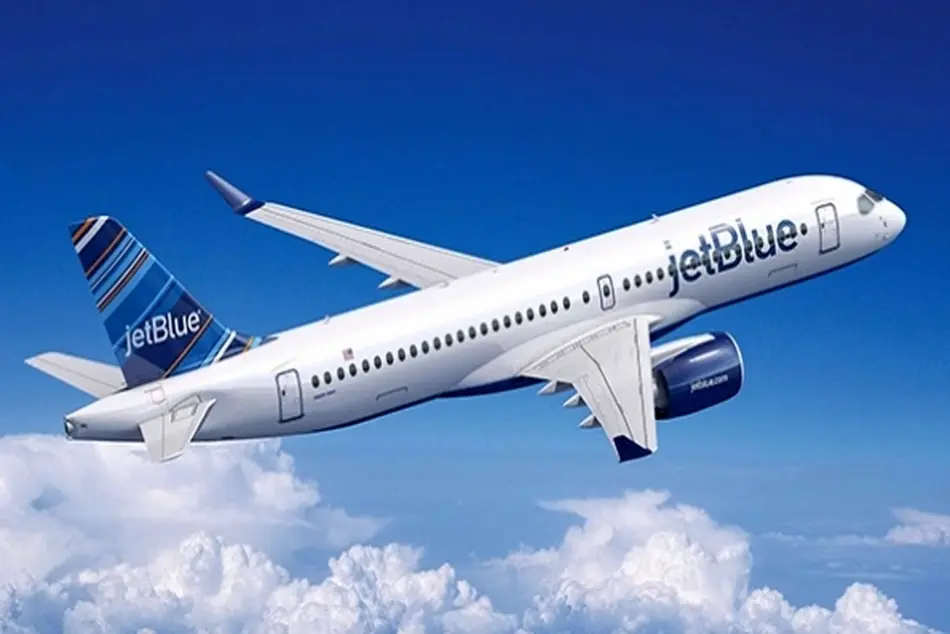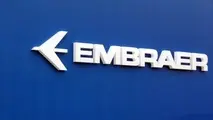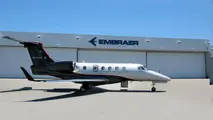JetBlue orders 60 A220-300s to replace E190s
JetBlue Airways, providing an early boost to the newly rebranded Airbus A220 line and delivering a notable blow to Embraer, has placed an order for 60 A220-300s—previously known as Bombardier CS300s—and earmarked them as E190 replacements. Delivers are planned to start in 2020.

JetBlue Airways, providing an early boost to the newly rebranded Airbus A220 line and delivering a notable blow to Embraer, has placed an order for 60 A220-300s—previously known as Bombardier CS300s—and earmarked them as E190 replacements. Delivers are planned to start in 2020.
The deal, the first announced under the new Airbus-Bombardier partnership that took over the CSeries, includes options for 60 more aircraft, which would begin arriving in 2025. JetBlue also has options to swap smaller A220-100s (previously CS100s) for the larger -300 models.
The Airbus A320-family operator also rearranged its orderbook for its larger narrowbodies, converting 25 A320neos to A321neos and modifying the delivery schedule. JetBlue plans to take 13 A321neos in 2019, followed by 15, 16, 15, 14, and 12 each year through 2024.
Taken together, the A220 order plus the swap of A320neos for larger A321neos means that JetBlue’s average aircraft capacity will grow in the coming years. While it has not specified a configuration for its A220-300s, they will have at least 20% more seats than the carrier’s 100-seat E190s.
“While the E190 has played an important role in JetBlue’s network since 2005, the airline’s fleet review determined that the A220’s economics would allow the airline to lower costs in the coming years,” the airline said. “The A220 was designed by previous manufacturer Bombardier to seat between 130 and 160 customers, enabling financial and network advantages over the current 100-seat Embraer configuration.” JetBlue calculates the A220-300s will burn 40% less fuel per seat than the E190s.
“We are evolving our fleet for the future of JetBlue, and the A220-300’s impressive range and economics offer us flexibility and support our key financial and operating priorities,” JetBlue CEO Robin Hayes said.
The New York-based carrier earlier this year said it was targeting a cost per available seat-mile (CASM) CAGR of 0-1% during the next three years. The figure factors in its reconfigured 162-seat A320s, which added 12 seats, boosting ASMs 8% without adding a single departure. It also assumed the E190s would stay put.
JetBlue plans to take five A220s in 2020, followed by four in 2021, eight in 2022, 19 in 2023, 22 in 2024, and two in 2025. They will be built at the soon-to-be-established A220 assembly line in Mobile, Alabama, which is now under pressure to meet its previously stated goal of opening in 2020.
The carrier plans to begin phasing out its E190 flying in 2020—a process that will last about five years, matching the delivery timeline for the new A220s.
JetBlue’s order comes on the 10th day of the new Airbus/Bombardier partnership that sells and supports the former Bombardier CSeries. The 60-aircraft commit boosts the model’s firm-order backlog 15%, to 462. It also deals a major blow to Embraer, which saw its place as an incumbent at JetBlue and its offer of new E195-E2 beaten by a slow-selling line that has delivered just 40 aircraft in two years.



